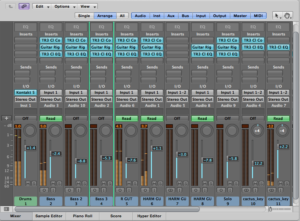Ready, Break
I absolutely love the show Dr. Katz. In what might be my favorite episode, DK has been asked to give a guest lecture as part of an adult education course (to which he is clearly ill prepared for). As Katz starts orally composing his speech, he gets caught up in critically analyzing each word of his opening, until everything sounds completely crazy to him.
The same thing, of course, happens in mixing. Once I have completed a project, I can rarely ever listen back without becoming somewhat nauseated. Presumably, this means I have essentially “listened to failure” as they might say in the weight room. In other words, there is a level of saturation that occurs with all art forms, in which a person not only stops experiencing any joy by consuming the product, but the art actually worsens your mood. We have all experienced this with certain pop songs that are incessantly broadcast to us through commercials and in retail stores. But, for the most part, music tends not to saturate as quickly as other art forms, such as video and standup comedy. Only rarely can I hear a joke a second or third time and laugh even close to as hard as the first time.
But, while a piece of recorded music can generally be tolerated by the human ear many times before reaching full saturation, this does not mean that a person does not reach more transient moments of listening fatigue. In fact, over the years I have learned that my ears start to play tricks on me after about two hours of mixing work on a particular track. After that point, I simply cannot trust what I am hearing and many harms have been caused to my mixes by ignoring this reality.

However, sometimes walking away is easier said than done, particularly if you are not yet satisfied with where your mix is heading. This is why having an arbitrary cutoff, such as two hours, can be useful — although I have been known to violate my own rule (usually to my detriment) from time to time. Now, a break doesn’t necessarily mean avoiding all things musical. In fact, it can be a great time to jam, mess around with your gear, or even write about music. The key is to be able to switch focus so that when you return, your ears are fresh and rested. For me, this process also takes about two hours.
When I do return to the mix, I start out by first re-calibrating my ears with a good reference track. Then I go over my notes and see if any of my opinions have changed since I left off. You would be surprised at how many times situations that I thought were dire all of a sudden become completely manageable with just a little bit of separation.


Comments
Ready, Break — No Comments